Wild About Cumberland
The annual program is a field trip to introduce fourth graders to the many adventures that await them in the outdoors.
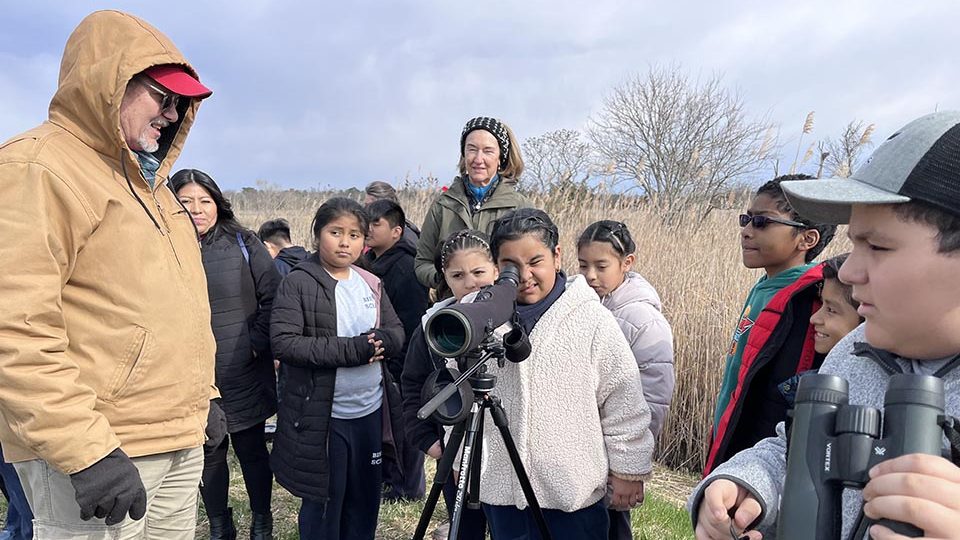
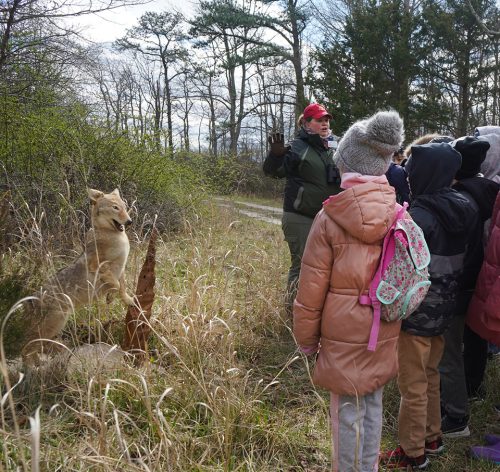
In mid-March, 500 school children, all fourth graders, descended on the New Jersey Delaware Bayshore in a parade of school buses. They came to walk in the woods and to learn about habitat types that include farm fields, grasslands, successional forests, upland forests, hardwood swamps, and vast tidal marshes. They learned to tell manmade paths and ditches from natural ones. They were oriented to the spot where they live, beginning with the planet Earth, to continents and oceans, to the Great Divide, to their state, to their own watershed, to their county and, finally, to Berrytown Road and the PSEG wetland restoration site where their field trip was held.
Most importantly, they came to have fun.
For those of you who don’t remember fourth-grade curriculum, this is when students are introduced to geography. And although it may seem strange, most fourth graders do not yet know the county they live in, unless they are simply too shy to respond “Cumberland County” when asked. Some confuse the word county and country. But by the end of the day they are all shouting with confidence that they are “Wild About Cumberland!”
Our volunteers are primarily retired teachers, wildlife professionals, and biologists who lead students on a full-day field trip experience though a rugged stretch of Commercial Township. The goal is to build an enthusiasm for outdoor exploration and a pride in our county’s natural and cultural resources.
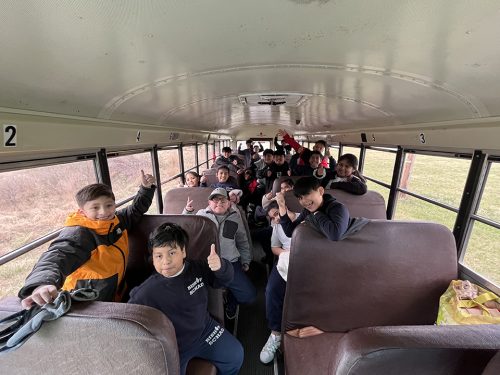
Some of the retired teachers who now lead Wild About Cumberland once took their own classes on the field trip. Over the years students have come from Vineland, Millville, Bridgeton, and Maurice River, Downe, Hopewell, Lawrence, and Commercial Township schools. We have even had home-schooled children join us.
CU Maurice River (Citizens United to Protect the Maurice River and Its Tributaries, Inc.) has hosted Wild About Cumberland during the winter each year since 2006 (missing only twice during COVID). We estimate that about 8,000 students have had the Wild About Cumberland experience. The first to have participated are now 28 years old, so in coming years we are likely to have their children joining us. We are building a tradition.
CU Maurice River staff has been instrumental in facilitating this program. It began as Raptor Discovery Days; at that time, we coordinated the out-of-door activities in association with the county Eagle Fest. In 2011 and 2012, CU took over the entire program and it was renamed Eagle Fest Education Days; since 2013 we have used the name Wild About Cumberland.
We bring together a host of partners to make the event possible, including Woodford Cedar Run Wildlife Refuge, Bayshore Center at Bivalve, and PSEG. Approximately 25 to 30 volunteers help each year. Teachers, students, and chaperones are treated to sessions that emphasize “sense of place,” and the environmental education component focuses on our local habitats and the species that attendees might encounter. This year 500 students were given indoor lessons for half a day at the Bayshore Center in Bivalve and outdoor field studies the other half of the day led by CU staff and volunteers. Mid-day, the indoor students and outdoor students traded places. Annually, 350 to 600 students have participated.
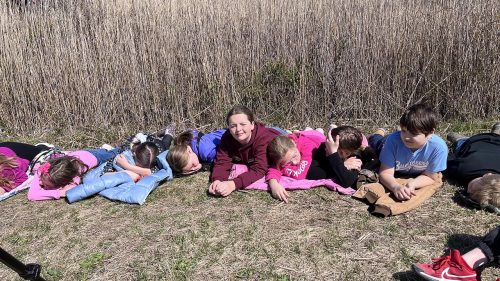
With 20 to 25 enthusiastic students on a trail at one time, we are unlikely to see wildlife during our explorations, aside from the birds that soar or perch above us. But we learn to be detectives looking for signs of wildlife—footprints, bones, turtle shells, eggs, owl pellets, feathers, remains of fruits, and the highlight for the children is animal scat. We regularly see fox, otter, bird, and coyote droppings. For good measure we bring two stuffed coyotes prepared by taxidermists and place them in the bushes. This causes quite a commotion, and it gives us a chance to explain that any self-respecting coyote would not allow itself to be spotted by 20 screaming school children!
At the Bayshore Center the indoor lessons commonly involve an Enviroscape model that allows students to understand what a watershed is, and how what we do on our properties affects the environment. The focus of this is usually stormwater runoff, the products we use on the land, and how they make it into our waterways.
We had a number of rainy days in advance of the program this year, which necessitated pumping out some huge puddles to allow students to skirt them. We have also had years where we needed to scramble to adapt all our learning to the indoors due to weather-related constraints.
Unfortunately local schools have limited or no funds for field trips and busing. CU Maurice River raises money for busing to make the program possible. Other expenses include rental of the Bayshore Center in Bivalve, volunteer lunches, portable toilets, mailings to schools, Woodford Cedar Run Wildlife Refuge’s live bird experience, and additional particulars.
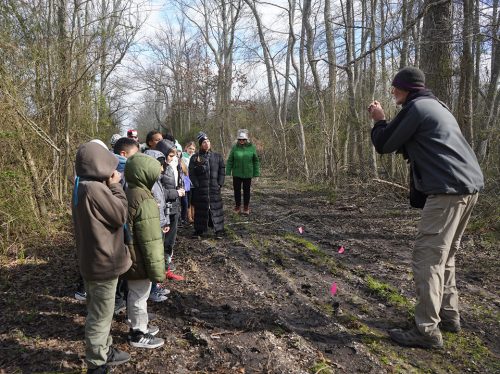
Furthermore, our communities come together to make the program possible. Inspira Health provides EMTs to have onsite in case a health issue arises. Our CU membership provides necessary funding, and the National Park Service’s Wild and Scenic Rivers Program supports our staff’s coordination. Various local corporations help out. This year Chem Glass was a major donor. Often, the county has assisted with funds for busing. PSEG provides public access to its restoration site, and its Estuary Enhancement Program personnel assist with educational interpretation on the property. These are staff who manage the biological restoration of the former salt hay farm to its original state as tidal wetlands.
The thing we stress most to our group leaders is that we want the children to have fun experiencing the outdoors. We want them to look forward to being outside. Thirty years ago most children played outside, often in the woods or at a nearby park. Incredibly, today many children have never been in a wooded area. It’s not unusual for a student to ask about animals that don’t exist in our locale since the wild areas they commonly see are viewed through the lens of television and You Tube. Yes, they sometimes ask if we’ll see lions, giraffes or other exotic wildlife!
There has been a focus on nature deficit disorder in today’s world. Children lack interaction with nature for a number of reasons. The organization Children in Nature offers this explanation: “The proliferation of electronic communications, poor urban planning and disappearing open space, increased street traffic, diminished importance of the natural world in public and private education, and parental fear magnified by news and entertainment media” results in a culture in which many parents are afraid to let their children explore the natural world around them.
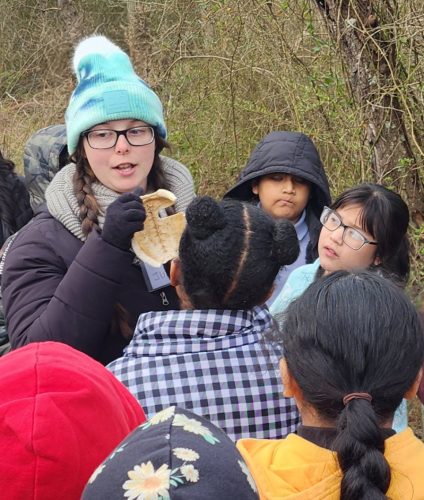
Studies have concluded that children who lack time outside are more likely to have physical health problems, like childhood obesity and vitamin D deficiency. They are also more likely to be plagued emotionally with anxiety or depression. Studies show that, regardless of your age, being in green spaces has a positive effect on mental health, primarily attributed to boosts in serotonin levels.
This year was stellar and Mother Nature cooperated. It is our hope that the kids are now “Wild About Cumberland,” and will seek the wonders of nature on their own more often.









